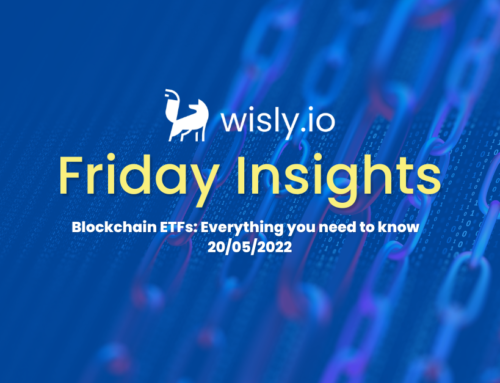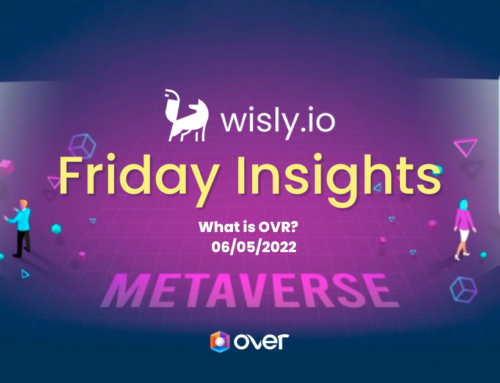Welcome back to the crypto-verse, where we explore the latest news impacting the ever frantic world of digital currency. Let’s take a look at what caught our eye at Wisly this past week.
How a 10-second video clip sold for $6.6 million
In October 2020, Miami-based art collector Pablo Rodriguez-Fraile spent around $67,000 to produce a 10-second video art piece that could be viewed online for free. He sold it last week for $6.6 million – that’s absurd, right? Well, not in the authenticity-obsessed art world!
The video by digital artist Beeple, whose real name is Mike Winkelmann, was authenticated using blockchain technology, which serves as a digital signature to certify who owns it and verify that the work is original.
It’s a new type of digital asset — known as a non-fungible token (NFT). This asset lives forever on the blockchain, unchanged and unchallengeable, as proof of the buyer’s ownership.
This new type of ownership has exploded in popularity during the pandemic, as enthusiasts and investors alike are spending enormous sums of money on products that only exist digitally, with the hope that they will be even more valuable in the future.
Blockchain technology allows these online items to be publicly authenticated as unique, which differs from traditional online products that can be endlessly reproduced.
“You can go in the Louvre and take a picture of the Mona Lisa, and you can have it there, but it doesn’t have any value because it doesn’t have the provenance or the history of the work,” said Rodriguez-Fraile, who says he first bought Beeple’s piece because of his knowledge of the artist’s work.
“The reality here is that this is very, very valuable because of who is behind it.”
“Non-fungible” means the items that cannot be exchanged on a like-for-like basis, as each is one of a kind — in contrast to fungible assets such as traditional currency, stocks or gold bars.
NFTs range from digital artworks and sports cards to pieces of land in virtual environments or exclusive use of a cryptocurrency wallet name – this is similar to the rush to secure domain names in the early days of the internet.
Christie’s embrace the terrifying

Christie’s, an art auctioneer, has just this week launched their first-ever sale of digital art – a collage of 5,000 pictures, also by Beeple – which exists only as an NFT. Bids for the work have already hit $3 million, with the sale’s closing date scheduled for March 11.
The auction house, founded in 1766, will now accept payment in the form of Ether and traditional money. Businesses making these kinds of decisions help push cryptocurrency further into the mainstream.
“I think these moments are inevitable, and when institutions of any kind try to resist the inevitability, it usually doesn’t work out very well,” said Noah Davis, a specialist in post-war and contemporary art at Christie’s, on accepting crypto payment. “And so, the best thing to do is embrace the terrifying.”
Major Chinese bitcoin mining hub is shutting down
China’s Inner Mongolia region plans to ban new cryptocurrency mining projects and shut down existing activity in an attempt to cut down on massive energy-consuming operations.
Bitcoin mining consumes more energy than entire countries like Ukraine and Argentina. China accounts for around 65% of all bitcoin mining globally — Inner Mongolia alone accounts for about 8% due to its cheap energy. This is more than the United States, which accounts for 7.2% of global bitcoin mining.
Northern China-based Inner Mongolia failed to meet central government assessment targets for energy use in 2019 and was reprimanded by Beijing. In turn, the region’s development and reform commission laid out plans to reduce rising energy consumption.
This plan involves the shutting down of existing cryptocurrency mining projects by April 2021 and not approving any further new projects in the time being. It also entails the reassessment of other energy-intensive industries like steel and coal.
While the Chinese government does back the development of blockchain technology, it has looked to crack down on digital currencies themselves. Beijing banned initial coin offerings back in 2017 and also cracked down on businesses involved in cryptocurrency operations, such as exchanges.
China aims to become more environmentally friendly. President Xi Jinping said last year the country has a target of peak carbon dioxide emissions by 2030 and carbon neutrality by 2060.
U.K. Investors Can Now View Crypto Holdings In Their Bank Accounts

At the end of February, the U.K. personal finance tool Money Dashboard started allowing its 600,000 user base to view their crypto holdings alongside their bank accounts and other financial products within its app.
Users can now access their balances and transactions on exchanges such as Coinbase, Binance and Bitstamp via the Money Dashboard.
The U.K. company has partnered with Zabo to provide this service – the Dallas-based crypto software firm seeks to connect crypto wallets to bank accounts.
According to co-founder Christopher Brown, their goal is to simplify integrating cryptocurrency and traditional finance products through partnerships with financial services providers.
The collaboration with Money Dashboard is the first of its kind with a U.K. company. The U.K. regulator, the Financial Conduct Authority (FCA), estimates that around 1.9 million adults now hold some form of cryptocurrency. This suggests that the partnership comes at an appropriate time, with so many directly connected to the crypto universe.
Any data, text or other content on this page is provided as general market information and not as investment advice. Past performance is not necessarily an indicator of future results.




